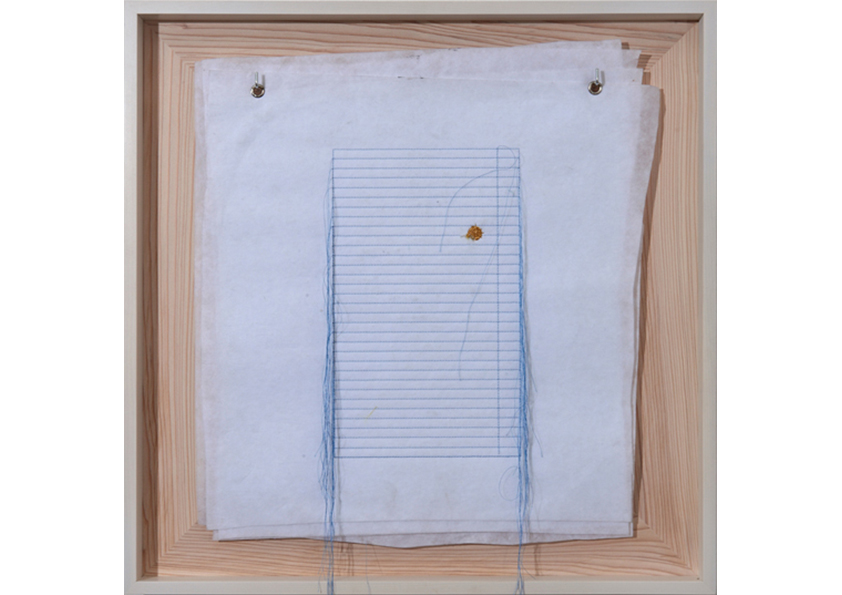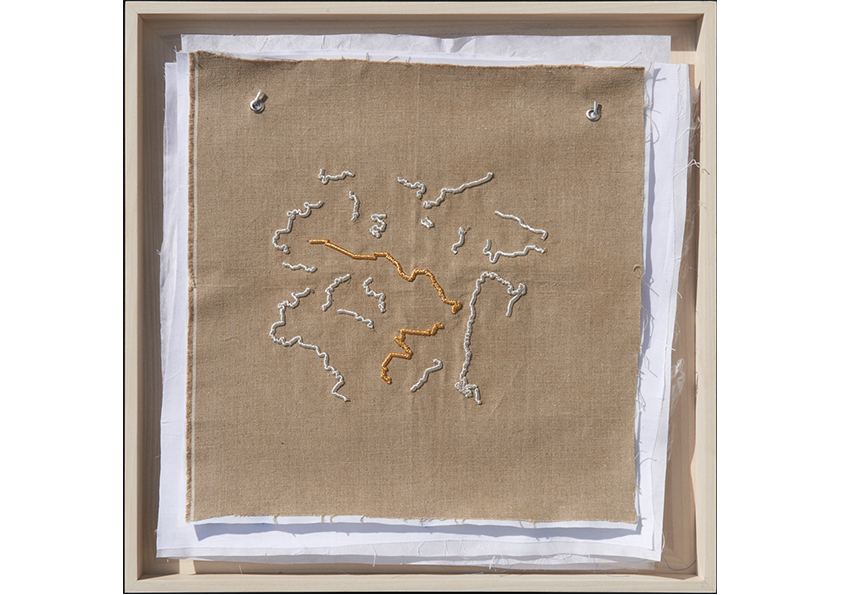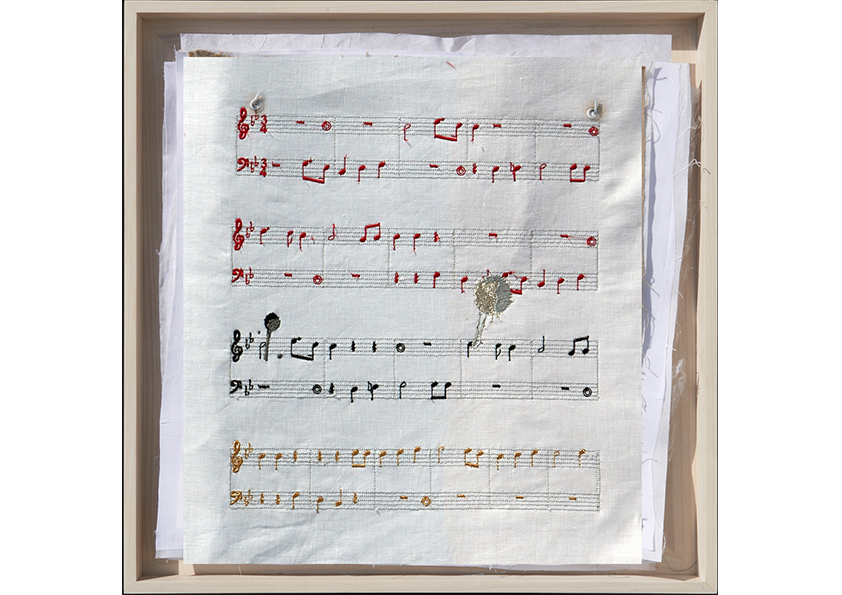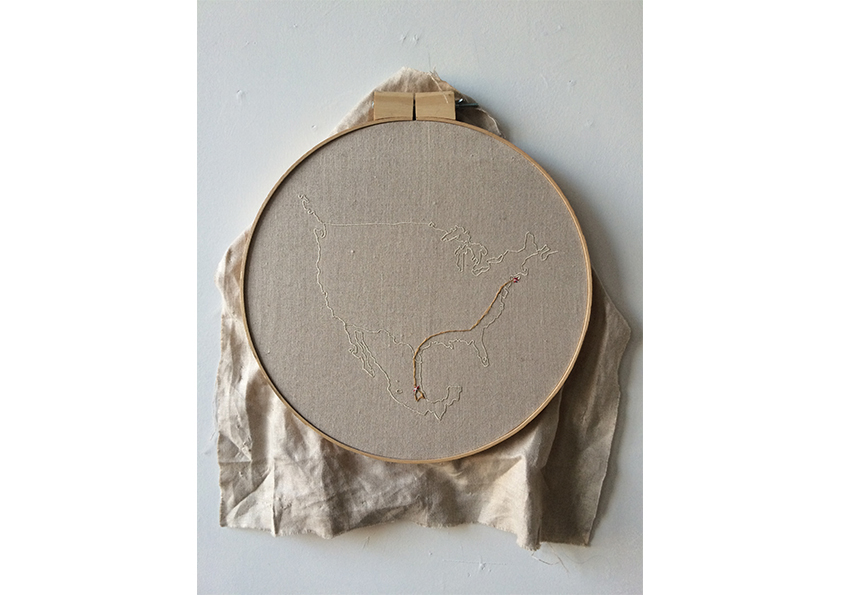2016 Season I
Artist Statement
Ana de la Cueva's outlook on life is reflected in each of her works, which elaborates on issues regarding territories, history, feminism, identity, tradition and transformation in contemporary society. Due to a heightened sensibility, her practice often entails interaction with others and is site-specific. It encompasses a range of mediums, including embroidery, ceramics, photography, video, printmaking, painting and sculpture. Each body of work expounds on the malleability of humans and how the environment, displacement, travel and relationships, leave traces. Cueva's work not only addresses important subject matter, but also does so honestly and vividly, with a highly personal aesthetic sense, and above all, employs a range and technical mastery of materials which is evident in the use of threads across many media in a minimal manner. The psychological charge of the threads used to describe political situations and geographical paths give this delicate material a strong role in each piece. Cueva's most recent work deals with the daily injustice in the political system in Mexico as well as in human relationships. She considers herself an urbane artist who works successfully in a post-studio paradigm. An artist of the world, who draws from many different aspects of personal life-experiences to promote and challenge thought on social communication and cultural engagement. There is much she wants to investigate and communicate in work that is deeply sophisticated, personal, and straightforwardly beautiful. Her work is presented with its scopic vision - in its consideration of life cycles, of power and gender-politics, as well as for its openness to the material and intangible aspect of time. Cueva has had the opportunity through multimedia works to show her approach to issues concerning the Border, as well as economic, social, and cultural relations between America, Mexico, Central and South America. Each year, thousands of migrants move from the end of “America” and embark on a journey towards a better quality of life, often at risk of losing their own. Combining imperative and clandestine trade, this human traffic has formed the image of a densely compacted social fabric, with a very uncertain solution. Using simple visual elements, Cueva's attempt is to stimulate a reflection on the profound nature of the border, both in the areas of artistic creation and the no less ambiguous areas of human existence.
During most of this year Cueva has developed a body of work related to her personal fragmented feelings and truncated wishes, dreams of life, life without life, violence, the amazing pain that the injustice in her country makes her feel like the injustice in human relationships, realities.





